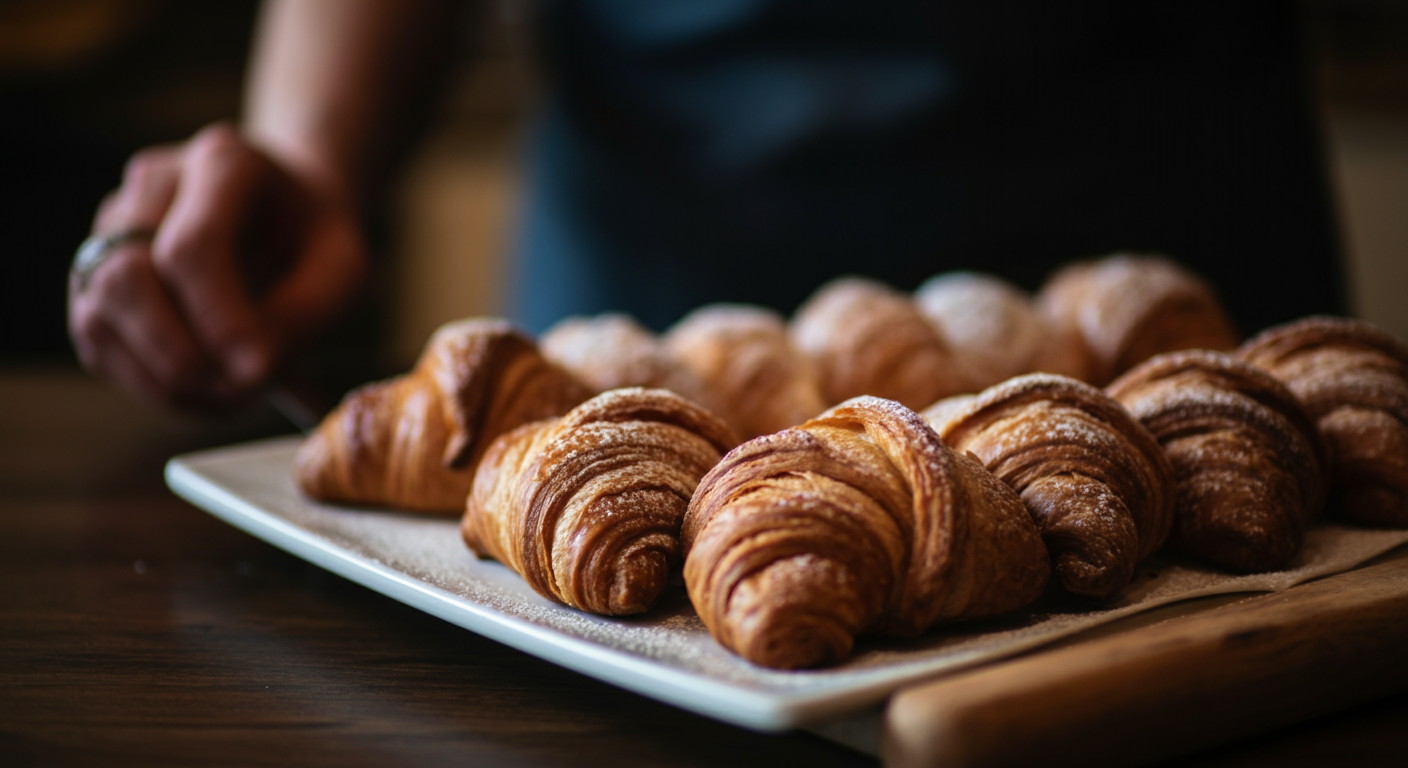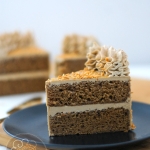Blog
How To Make Perfect Bread

Baking your own bread at home can be a rewarding and satisfying experience. There’s something incredibly special about the smell of fresh bread wafting through your kitchen. Plus, homemade bread tends to be healthier, free of preservatives, and much more customizable than store-bought versions. So, how do you achieve the perfect loaf? Whether you’re a beginner or an experienced baker, these steps will guide you to baking perfect bread every time.
1. Choose Your Ingredients Wisely
The key to a great loaf starts with high-quality ingredients. Here’s what you’ll need:
-
Flour: Bread flour, which has a higher protein content than all-purpose flour, is ideal. It gives the dough structure and helps create a chewy, airy texture. For lighter bread, you can mix in some all-purpose flour, but bread flour is generally preferred.
-
Water: Lukewarm water is perfect for activating the yeast. Avoid hot water, as it can kill the yeast and prevent your dough from rising properly.
-
Yeast: Active dry yeast or instant yeast both work well. Instant yeast is faster and doesn’t need to be activated in water, but either will produce great results.
-
Salt: Salt isn’t just for flavor; it controls yeast activity and strengthens gluten, which helps your bread rise and hold its shape.
-
Sugar (optional): A small amount of sugar or honey can help feed the yeast, giving your bread a slightly sweeter flavor. It also helps achieve that golden-brown crust.
-
Fat (optional): You can add butter or oil to give the bread a softer crumb and a richer flavor. However, traditional bread recipes might not include fat.
2. Prepare Your Dough
The dough-making process can be done by hand or using a stand mixer with a dough hook attachment. Here’s the basic method:
-
Activate the Yeast: If you’re using active dry yeast, dissolve it in lukewarm water (about 100°F) with a pinch of sugar. Let it sit for 5-10 minutes until it becomes frothy. If you’re using instant yeast, you can skip this step and mix it directly with the dry ingredients.
-
Mix the Dry Ingredients: In a large mixing bowl, combine your flour and salt (and any other dry ingredients). Create a well in the center for your wet ingredients.
-
Add Wet Ingredients: Pour in the activated yeast mixture (or just water and yeast for instant yeast) and any oil or melted butter you’re using. Mix until combined.
-
Knead the Dough: Turn the dough onto a floured surface or use your mixer to knead for about 8-10 minutes. The dough should be smooth, elastic, and slightly tacky to the touch. If it’s too sticky, add a bit more flour, but be careful not to add too much, as it can make your bread dense.
3. Let the Dough Rise
Once your dough is kneaded, it’s time for the first rise. Place the dough in a lightly oiled bowl and cover it with a clean cloth or plastic wrap. Let it rise in a warm, draft-free spot for 1-2 hours, or until it doubles in size. The dough should feel light and airy when you gently poke it.
Pro Tip: If you’re in a cooler environment, place your dough in a turned-off oven with the light on, or let it rise in a warm corner of your kitchen.
4. Shape the Dough
After the first rise, punch down the dough gently to release the air bubbles. Then, shape it into your desired form—whether it’s a simple round boule, a long baguette, or placed into a loaf pan for a traditional sandwich loaf.
Be careful not to overwork the dough during this step. Shape it gently, so it maintains some of the airiness built up during the rise.
5. Second Rise (Proofing)
Once shaped, let the dough rise again. Cover it and let it rest for about 30-60 minutes, or until it has puffed up again. This secondary rise ensures that your bread will have a light, airy texture rather than being dense.
Pro Tip: If you want a slightly crispier crust, try proving your dough in a slightly cooler space, or even in the fridge overnight. This slow rise can develop more flavor and improve the texture.
6. Preheat the Oven
While your dough is going through its second rise, preheat your oven to 375°F (190°C). If you’re using a Dutch oven or baking stone, preheat that as well for a better, crustier result.
Pro Tip: Place a small, oven-safe dish of water in the oven while it preheats. The steam will help form a crisp, golden crust on your bread.
7. Bake the Bread
Once your dough has risen and the oven is ready, it’s time to bake. Place your loaf on the middle rack of the oven. Bake for about 25-35 minutes, or until the top is golden brown. You can test for doneness by tapping the bottom of the loaf; it should sound hollow if it’s fully baked.
Pro Tip: If you’re using a loaf pan, bake for closer to 35 minutes. For free-form loaves, check at around 25 minutes.
8. Cool the Bread
Once your bread is baked, remove it from the oven and let it cool on a wire rack. Cooling is an important step, as it allows the bread to finish cooking and solidify in texture. If you cut into it too soon, you’ll lose that wonderful soft crumb.
9. Slicing and Enjoying
After the bread has cooled for at least 30 minutes, slice it with a serrated knife. The crust should be golden and slightly crisp, and the inside should be soft, light, and airy.
Enjoy it as is, or with butter, jam, or your favorite spread.
Tips for the Perfect Bread Every Time:
-
Don’t rush the process: Bread-making takes time. Let the dough rise at its own pace for the best texture and flavor.
-
Use a thermometer: If you’re unsure about the internal temperature of the bread, use an instant-read thermometer. The bread is done when it reaches 190-200°F (88-93°C) internally.
-
Experiment with flavors: Try adding herbs, cheese, or seeds to the dough for a unique twist on classic bread.
-
Use a baking stone or Dutch oven: For a better crust, a preheated stone or a covered Dutch oven helps create an environment of steam and heat that makes the bread rise better and gives it a perfect crust.
Conclusion
With just a few simple ingredients and a bit of patience, you can create the perfect loaf of bread at home. Whether you’re baking for your family or just enjoying the process for yourself, there’s no greater feeling than pulling a freshly baked loaf out of the oven. Happy baking!

